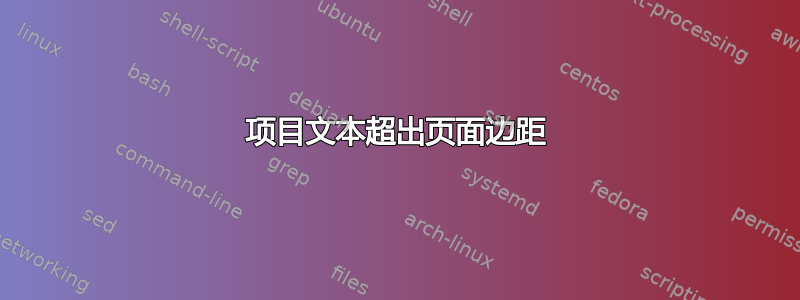
查看代码部分提供的最后一项,以及它如何在图像上显示。
\documentclass{article}
\usepackage[utf8]{inputenc}
\begin{document}
\begin{description}
\item{1e)}
\item{P_{(maker, city, highway)} := \Pi_{maker, city, highway}(Pickup \bowtie Product) \\ }
\item{C_{(maker, city, highway)} := \Pi_{maker, city, highway}(Car \bowtie Product) \\}
\item{$A_{(maker, city, highway)}$ := P \cup C \\}
\item{A - \Pi_{highway1, city1}(\sigma_{0.55\,city1\,+\,0.45\,highway1\,<\,0.55\,city2\,+\,0.45\,highway2})\rho_{maker, city1, highway1}(A) \times \rho{maker, city2, highway2} \newline
(A) - \sigma_{highway1 < highway2}(A)) \\ }
\end{description}
\end{document}

更新:将环境更改为“描述”,它显示错误:在数学模式下结束无效。
我还收到错误消息“缺少 $ 插入”
答案1
欢迎来到 TeX.SX。我衷心希望您这样做,但这对我来说是一个非常艰难的挑战,我不太清楚您要做什么,建议您考虑更改一些格式,因为这对眼睛不太友好。尽管如此,我还是尝试为您提供我认为您想要的东西。
首先要说的是,在 LaTeX 中,我们有列表。我们不会手动给问题编号,而是使用环境。转到环境是枚举环境。
\begin{enumerate}
\item
Milk
\item
Eggs
\item
Cheese
\end{enumerate}
给我们一个编号列表。LaTeX 会帮我处理所有编号,这样如果我决定先放奶酪再放鸡蛋,我只需更改源代码中的顺序,而不必返回重新编号。
\begin{enumerate}
\item
Milk
\item
Cheese
\item
Eggs
\end{enumerate}
它还为我设置了所有格式,比如缩进。每次\item都会增加计数器并将我移至列表中的下一个项目。
你永远不应该手动给你的清单编号,这是不可饶恕的大罪,惩罚是立即停止巧克力配给。
列表可以嵌套,以便我们可以有子项。
\begin{enumerate}
\item
Milk
\item
Cheese
\begin{enumerate}
\item
Cheddar
\item
Edam
\end{enumerate}
\item
Eggs
\end{enumerate}
LaTeX 已预定义标签样式。更改标签样式有两种方法,一种比较难,另一种比较简单,即使用软件包enumitem。我选择了简单方法。
现在,就你的情况而言,你似乎有一个问题 1,带有子问题。为此,我使用了嵌套列表,这样你就可以有以下问题:1a)、1b)、1c) ... 2a) 2b) 2c),其中 LaTeX 负责所有编号。
这可能会导致一些麻烦,因为您可以看到 LaTeX 通常会逐步缩进子项目。如果您的结构如下,则这很好:
但如果你有这样的结构,那就看起来很傻:
因为边距太大。
因此,我在定义列表结构时尝试考虑到这一点。
至于你的实际数学,我已经尽力了,但很难处理。文本最好是直立的,我已经使用amsmath命令\text{}来处理真实文本。像 city1 这样的东西我没有解释为文本,而是解释为某种变量,但我仍然认为它应该是直立的,所以使用了\mathrm{}。可能还有很多事情可以做。但就是这样。
\documentclass{article}
\usepackage[fleqn]{amsmath}
\setlength{\mathindent}{0pt}
\usepackage{enumitem}
\begin{document}
\begin{enumerate}[label={}]
\item
\begin{enumerate}[leftmargin=0cm,start=5,label=\arabic{enumi}\alph*)]
\item
\begin{flalign*}
P_{\text{(maker, city, highway)}} &:= \Pi_{\text{maker, city,
highway}} (\text{Pickup} \bowtie \text{Product}) \\
C_{\text{(maker, city, highway)}} &:= \Pi_{\text{maker, city,
highway}} (\text{Car} \bowtie \text{Product}) \\
A_{\text{(maker, city, highway)}} &:= P \cup C
\end{flalign*}
$A - \Pi_{\mathrm{highway1, city1}} (\sigma_{0.55\mathrm{city1} +
0.45\mathrm{highway1} < 0.55\mathrm{city2} +
0.45\mathrm{highway2}}) \rho_{\text{maker}, \mathrm{city1},
\mathrm{highway1}}(A) \times \rho_{\text{maker}, \mathrm{city2},
\mathrm{highway2}} (A) - \sigma_{\textrm{highway1} <
\textrm{highway2}}(A))$
\end{enumerate}
\end{enumerate}
\end{document}
我把方程式移到了左边,因为我认为当它们在列表中时效果会更好,但是尽管我说过这么多,这可能根本不是最好的方法。相反,你有没有考虑过使用标题来分隔问题?
答案2
我无法从标记中猜出它应该是什么样子,但这可能是一个开始:
\documentclass{article}
\usepackage[utf8]{inputenc}
\usepackage[T1]{fontenc}
\usepackage{amsmath}
\begin{document}
\section*{1e)}%??
\begin{align*}
P_{(\mathrm{maker}, \mathrm{\mathrm{city}}, \mathrm{highway})} &:=
\Pi_{\mathrm{maker}, \mathrm{city}, \mathrm{highway}}(\mathrm{Pickup} \bowtie \mathrm{Product}) \\
C_{(\mathrm{maker}, \mathrm{city}, \mathrm{highway})} &
:=
\Pi_{\mathrm{maker}, \mathrm{city}, \mathrm{highway}}(\mathrm{Car} \bowtie \mathrm{Product}) \\
A_{(\mathrm{maker}, \mathrm{city}, \mathrm{highway})}&:= P \cup C \\
A - \Pi_{\mathrm{highway1}, \mathrm{city1}}\\
\qquad(\sigma_{0.55\,\mathrm{city1}+0.45\mathrm{highway1} <0.55\,\mathrm{city2}+0.45\mathrm{highway2}})\\
\qquad\rho_{\mathrm{maker}, \mathrm{city1}, \mathrm{highway}1}(A) \times \rho{\mathrm{maker}, \mathrm{city2}, \mathrm{highway2}}\\
(A) - \sigma_{\mathrm{highway1} < \mathrm{highway}2}(A)) \\
\end{align*}
\end{document}









